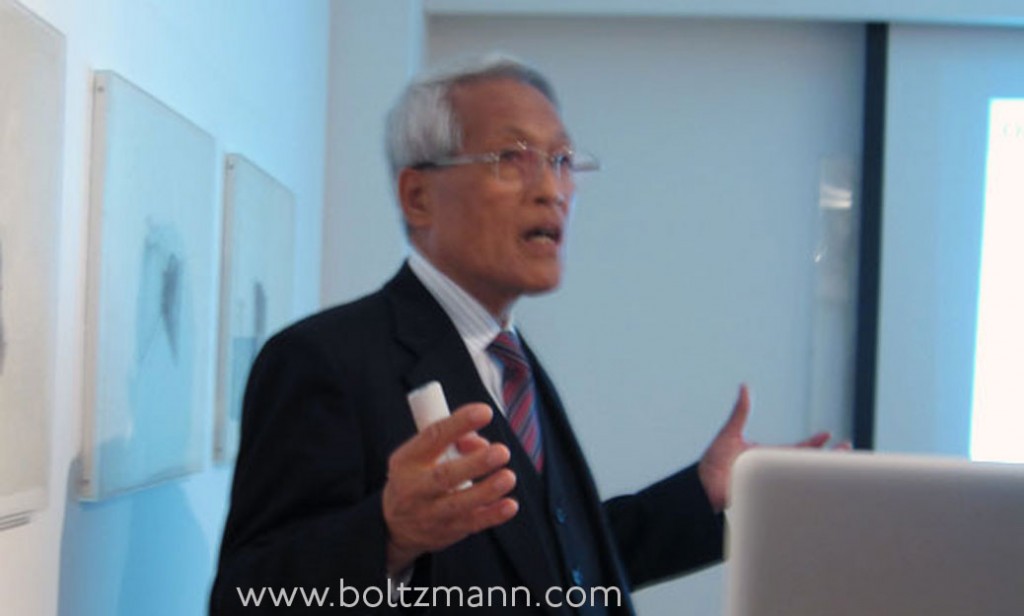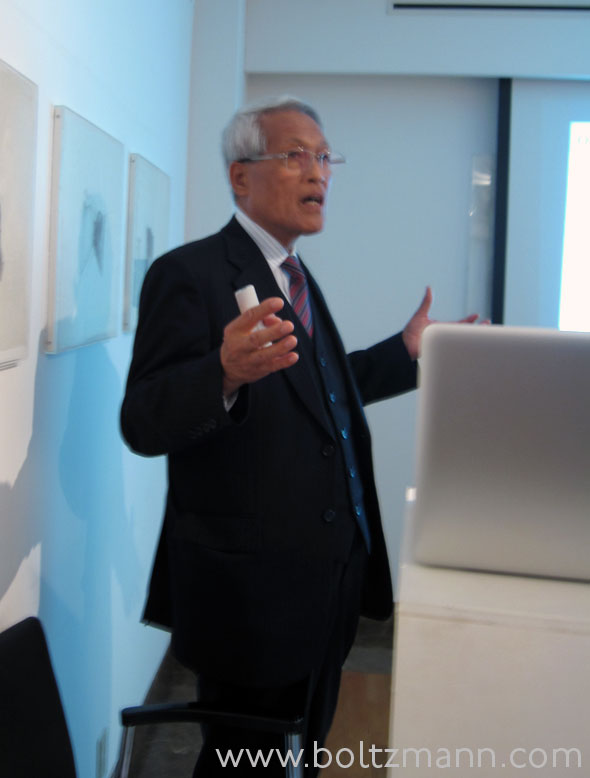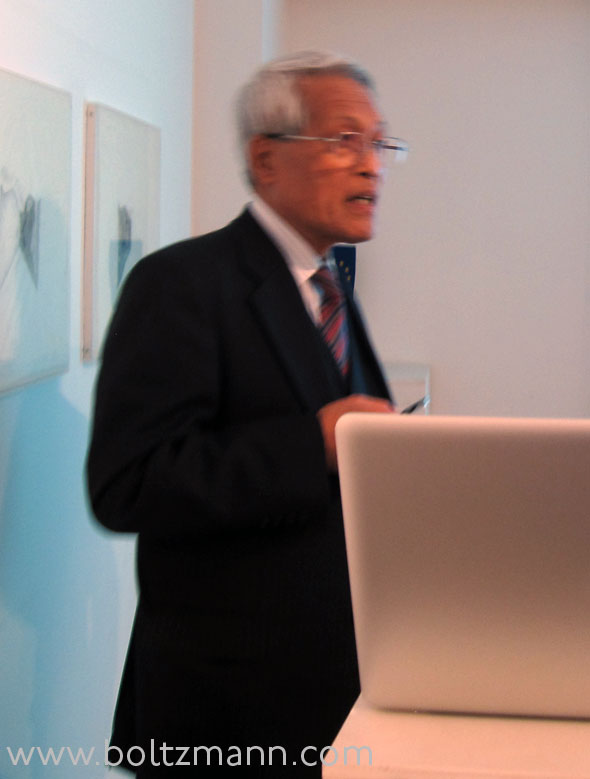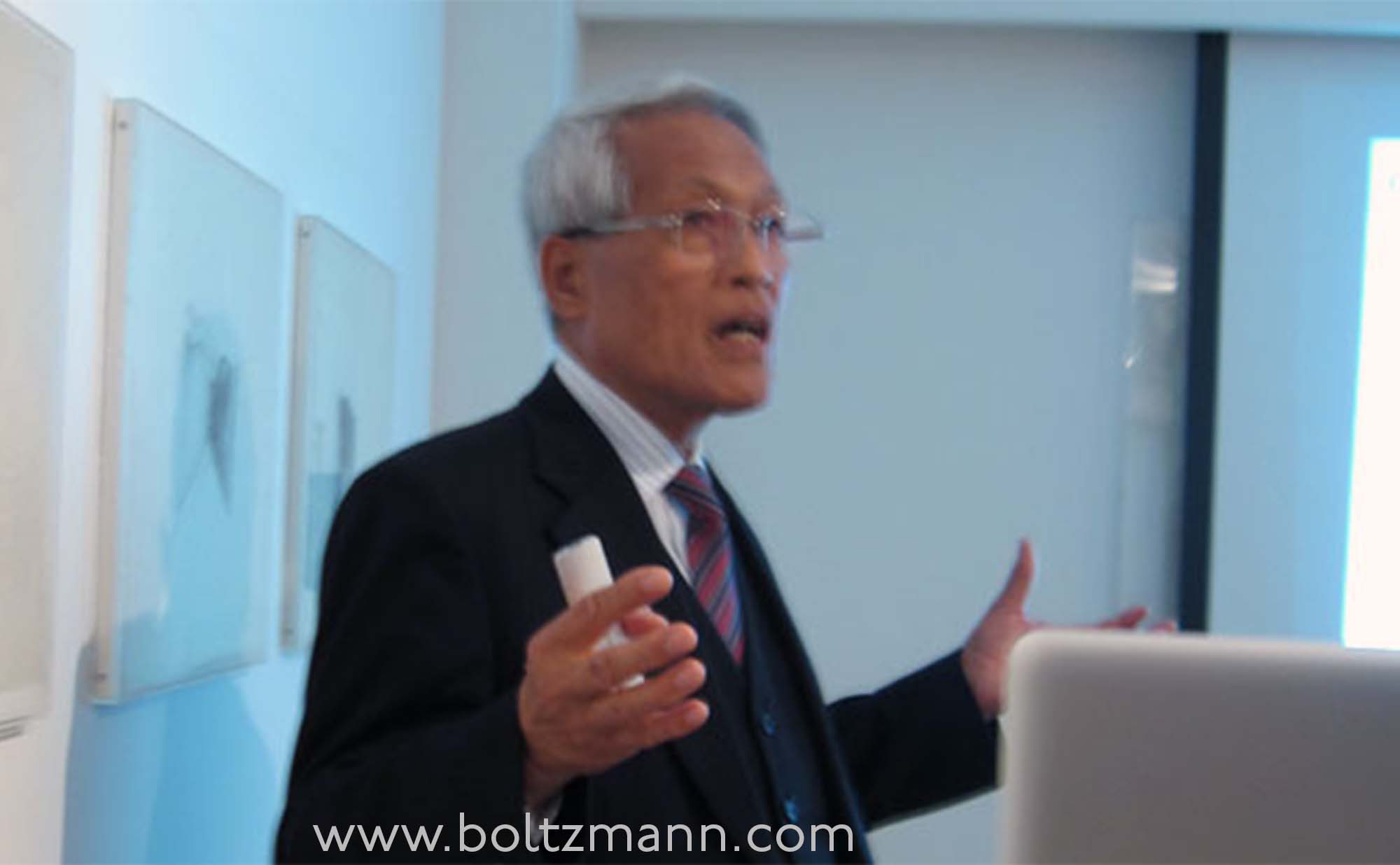Revitalization of Japanese Industry
Haruo Kawahara, Representative Director and Chairman of the Board of JVC KENWOOD Corporation
Keynote presented at the 6th Ludwig Boltzmann Symposium on February 20, 2014 at the Embassy of Austria in Tokyo.
summary by Gerhard Fasol

by Haruo Kawahara, Representative Director and Chairman of the Board of JVC KENWOOD Corporation
summary by Gerhard Fasol
KENWOOD corporate vision: Creating excitement and peace of mind for the people of the world
JVC KENWOOD Corporation was incorporated on October 1, 2008, and has 20,033 employees as of October 1, 2013.
KENWOOD overview
Total sales for fiscal year ending March 2013 was YEN 306.6 Billion (approx. US$ 3 Billion).
JVC KENWOOD today has four business divisions:
- Car Electronics (CE): 33% of total sales
- car navigation systems
- car audio systems
- CD/DVD drive mechanisms
- optical pick-ups
- Professional Systems (PS): 30%
- digital land mobile radio
- amateur radio
- security cameras
- professional video cameras
- emergency broadcasting equipment
- Optical & Audio (O&A): 22%
- action camera
- home audio systems
- all-in one tower design audio systems
- camcorder with wifi
- 4K projektor
- headphones
- Entertainment Software (SE): 13%
- Victor Entertainment Group
- Teichiku Entertainment
Issues of the electrical industry of Japan:
- 1970s: overwhelmed with vertical integration and self-sufficiency
- 1980s: appreciation of the yen (1985 Plaza Accord)
- 1990s: collapse of the Bubble (1991), relocation of production to Asia, three excesses:
- debt
- facility
- employment
- 2000s: lost 20 years
Going forward, Japan has the option of growth under new business models, or continue to stagnate with matured industries
While there is dramatic global market expansion in many business areas in the global electrical industry, e.g. for Lithium Ion Batteries, DVDs, Car navigation units, DRAM, Japan’s market shares are falling in most sectors. For example, Japanese market shares for LCD, DVD players, Lithium Ion batteries, or car navigation units have fallen from almost 100% global market share 5-10 years ago to 10%-20% today.
Restructuring mature industry can generate more economic benefit than innovating a new industry:
- large established market, although low growth
- reduced number of players in the market following consolidation
Revitalization of JVCKENWOOD
- the current main business as the core – not new business
- speed, like “fresh food”
- eliminate hidden waste and loss costs
- eliminate vested rights
Kenwood in 2002 was in a disastrous condition:
- net income: YEN -27 Billion (= US$ -270 million)
- debt: YEN 110 Billion (= US$ 1.1 billion)
- accumulated losses: YEN 45 Billion (= US$ 450 million)
- net worth: YEN -17 Billion (= US$ -170 million)
Restructuring by March 2003:
- Financial restructuring: Dept/equity swap. Moved from YEN 17 billion negative net worth to positive within 6 months
- Business restructuring: focus on core business. Terminated cellular phone business.
- Cost restructuring: 30% cost reduction. Closed 3 factories. Voluntary retirement.
- Management restructuring: management consolidation. Eliminate huge wastes and losses in subsidiaries.
Restructuring in FY2003 achieved a V-shape recovery. Net income margin was improved from -8% in FY3/2002 to 2%-4% in recent years.
In mature markets, growth is achieved through M&A, reducing the number of players in the market. As the top player in the market, profitable growth improved:
Main four players in the car electronics after-market before Kenwood-JVC merger:
- Pioneer
- Kenwood
- Sony
- JVC
after the JVCKENWOOD merger, and restructure to minimize losses from the TV business:
- JVCKENWOOD
- …
- …
JVC and KENWOOD formed a capital and business alliance in July 2007, followed by management integration in October 2008, and a full merger in October 2011. The business portfolio was restructured, and in particular big losses in the TV business were reduced. Fixed costs were reduced by 40% by selling off assets, reduction of production and sales sites, and 25% voluntary retirement.
This structural reform was completed in the FY3/2001, and led to another V-shaped recovery, and to profitable growth under the new medium term business plan.
The JVC-KENWOOD merger led to big jumps in market share in many markets, and thus to very much improved profitability.
Why did Japan’s mass production type electronics fail?
Answer: Japanese management failed to deal with globalization and digitalization.
Other factors that contributed to Japan’s failure are vertical integration, technology leakage from exporting production facilities, insufficient added value compared to the high Japanese labor costs, and lack of money for investment, because Japanese companies largely relied on bank loans instead of equity.
Japan’s heavy electrical industry on the other hand is competitive – why?
1. Creative know-how in the heavy electrical industry is in human brains, therefore more difficult to leak to competitors under Japan’s employment circumstances.
2. huge capital investment is needed, and almost fully depreciated in Japan. Therefore the depreciation costs exceeds HR costs.
How can Japan become competitive again?
Japan needs to accelerate growth strategies in those areas, where Japan has competitive advantage, and where Japanese industries can differentiate themselves. Examples are industrial areas which depend on a long-term improvements and advanced technologies, and techniques of craftsmen, and in next generation technologies.
JVC KENWOOD takes action to innovate
- JVCKENWOOD invested in a venture capital fund: the WiL Fund I, LP to reinforce alliances with potential ventures in Japan and overseas
- JVCKENWOOD invested in ZMP Inc. to promote car telematics and car auto-control


Copyright 2014 Eurotechnology Japan KK All Rights Reserved
